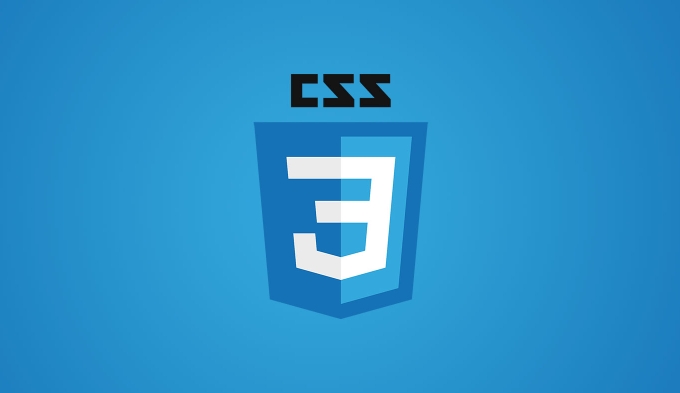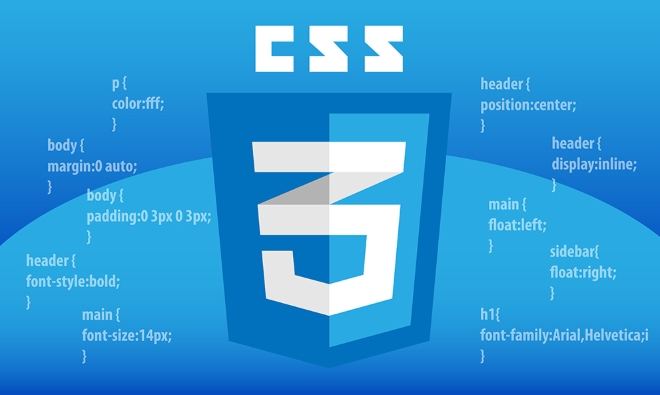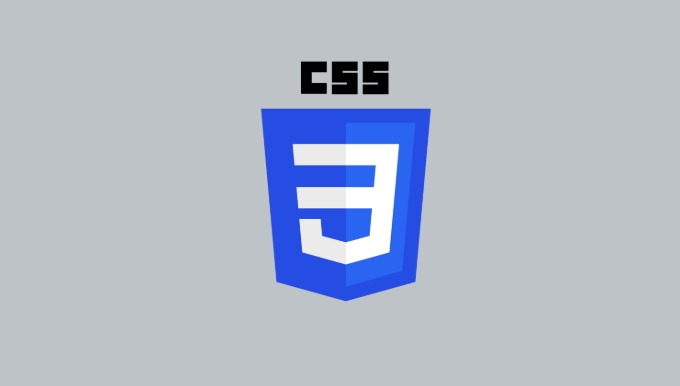 Web Front-end
Web Front-end
 CSS Tutorial
CSS Tutorial
 How to use the `:checked` pseudo-class for checkbox/radio button styling?
How to use the `:checked` pseudo-class for checkbox/radio button styling?
How to use the `:checked` pseudo-class for checkbox/radio button styling?
Jul 20, 2025 am 02:20 AMUse the :checked pseudo-class to customize checkbox and radio button styles based on the selection state, but because native controls are difficult to beautify directly, they usually need to be implemented in combination with other selectors or custom visual elements. The basic usage is to directly apply:checked to input, such as: input[type="checkbox"]:checked { border-color: green; }, but the cross-browser effect is limited. A more reliable way is to hide the default input and build custom controls: 1. Hide the real input (input[type="checkbox"] { display: none; }); 2. Create custom visual elements (such as span.checkmark); 3. Use the :checked adjacent brother selector to change the style (input[type="checkbox"]:checked .checkmark { background-color: #4CAF50; }). The same applies to radio buttons. Only the HTML type is changed to radio, and ensure that the name attributes of the same group are consistent. Cross-browser tips include testing multiple platforms, avoiding relying on colors only, adding focus states, using transition effects with caution, and checking selector syntax, input state, and JavaScript interference.

When you want to style checkboxes or radio buttons based on their selection state, the :checked pseudo-class is your go-to tool. It applies styles when a checkbox or radio input is selected. But since those form elements are tricky to style directly, most of the time you'll end up using it in combination with other selectors or custom visuals.

Basic Usage of :checked
You can use :checked directly on the input element like this:
input[type="checkbox"]:checked {
border-color: green;
}However, styling native checkboxes and radios this way has limited effectiveness across browsers. A more reliable approach is to hide the default input and build a custom one using labels and sibling combiners.

Styling Custom Checkboxes and Radios
To create sylable checkboxes or radios, start by hiding the original input:
input[type="checkbox"] {
display: none;
}Then create a custom visual — often a span or label — that changes appear when the checkbox is checked. Here's how you might do it:

<label class="custom-checkbox"> <input type="checkbox" /> <span class="checkmark"></span> </label>
And the CSS:
.custom-checkbox .checkmark {
width: 20px;
height: 20px;
background-color: #eee;
display: inline-block;
vertical-align: middle;
}
input[type="checkbox"]:checked .checkmark {
background-color: #4CAF50;
} This uses the adjacent sibling selector ( ) to target the .checkmark whenever the checkbox is checked.
- Hide the real input
- Style a fake checkbox next to it
- Use
:checkedto change the fake box's look
It gives you full control over how the checkbox looks in both states.
Handling Radio Buttons the Same Way
Radio buttons work the same way. You structure HTML similarly and apply styles when they're checked. The main difference is the HTML type:
<label class="custom-radio"> <input type="radio" name="group" /> <span class="radiomark"></span> </label>
The CSS would follow a similar pattern:
input[type="radio"]:checked .radiomark {
background-color: #2196F3;
} Make sure all related radio buttons share the same name attribute so only one can be selected at a time — standard browser behavior still apply here.
Cross-Browser Tips and Gotchas
- Always test in multiple browsers — especially Safari vs Chrome/Firefox.
- Avoid relying solely on color to indicate state; add shapes or borders too.
- Don't forget focus states for accessibility.
- Use transitions sparingly — they can make toggling feel sluggish.
Also, if you're not seeing changes take effect:
- Double-check your selector syntax
- Make sure inputs aren't disabled or read-only
- Ensure there's no JavaScript interfering with the checked state
Basically that's it.
The above is the detailed content of How to use the `:checked` pseudo-class for checkbox/radio button styling?. For more information, please follow other related articles on the PHP Chinese website!

Hot AI Tools

Undress AI Tool
Undress images for free

Undresser.AI Undress
AI-powered app for creating realistic nude photos

AI Clothes Remover
Online AI tool for removing clothes from photos.

Clothoff.io
AI clothes remover

Video Face Swap
Swap faces in any video effortlessly with our completely free AI face swap tool!

Hot Article

Hot Tools

Notepad++7.3.1
Easy-to-use and free code editor

SublimeText3 Chinese version
Chinese version, very easy to use

Zend Studio 13.0.1
Powerful PHP integrated development environment

Dreamweaver CS6
Visual web development tools

SublimeText3 Mac version
God-level code editing software (SublimeText3)
 How to use PHP to build social sharing functions PHP sharing interface integration practice
Jul 25, 2025 pm 08:51 PM
How to use PHP to build social sharing functions PHP sharing interface integration practice
Jul 25, 2025 pm 08:51 PM
The core method of building social sharing functions in PHP is to dynamically generate sharing links that meet the requirements of each platform. 1. First get the current page or specified URL and article information; 2. Use urlencode to encode the parameters; 3. Splice and generate sharing links according to the protocols of each platform; 4. Display links on the front end for users to click and share; 5. Dynamically generate OG tags on the page to optimize sharing content display; 6. Be sure to escape user input to prevent XSS attacks. This method does not require complex authentication, has low maintenance costs, and is suitable for most content sharing needs.
 PHP creates a blog comment system to monetize PHP comment review and anti-brush strategy
Jul 25, 2025 pm 08:27 PM
PHP creates a blog comment system to monetize PHP comment review and anti-brush strategy
Jul 25, 2025 pm 08:27 PM
1. Maximizing the commercial value of the comment system requires combining native advertising precise delivery, user paid value-added services (such as uploading pictures, top-up comments), influence incentive mechanism based on comment quality, and compliance anonymous data insight monetization; 2. The audit strategy should adopt a combination of pre-audit dynamic keyword filtering and user reporting mechanisms, supplemented by comment quality rating to achieve content hierarchical exposure; 3. Anti-brushing requires the construction of multi-layer defense: reCAPTCHAv3 sensorless verification, Honeypot honeypot field recognition robot, IP and timestamp frequency limit prevents watering, and content pattern recognition marks suspicious comments, and continuously iterate to deal with attacks.
 What are common CSS browser inconsistencies?
Jul 26, 2025 am 07:04 AM
What are common CSS browser inconsistencies?
Jul 26, 2025 am 07:04 AM
Different browsers have differences in CSS parsing, resulting in inconsistent display effects, mainly including the default style difference, box model calculation method, Flexbox and Grid layout support level, and inconsistent behavior of certain CSS attributes. 1. The default style processing is inconsistent. The solution is to use CSSReset or Normalize.css to unify the initial style; 2. The box model calculation method of the old version of IE is different. It is recommended to use box-sizing:border-box in a unified manner; 3. Flexbox and Grid perform differently in edge cases or in old versions. More tests and use Autoprefixer; 4. Some CSS attribute behaviors are inconsistent. CanIuse must be consulted and downgraded.
 How to build a PHP Nginx environment with MacOS to configure the combination of Nginx and PHP services
Jul 25, 2025 pm 08:24 PM
How to build a PHP Nginx environment with MacOS to configure the combination of Nginx and PHP services
Jul 25, 2025 pm 08:24 PM
The core role of Homebrew in the construction of Mac environment is to simplify software installation and management. 1. Homebrew automatically handles dependencies and encapsulates complex compilation and installation processes into simple commands; 2. Provides a unified software package ecosystem to ensure the standardization of software installation location and configuration; 3. Integrates service management functions, and can easily start and stop services through brewservices; 4. Convenient software upgrade and maintenance, and improves system security and functionality.
 Describe the `vertical-align` property and its typical use cases
Jul 26, 2025 am 07:35 AM
Describe the `vertical-align` property and its typical use cases
Jul 26, 2025 am 07:35 AM
Thevertical-alignpropertyinCSSalignsinlineortable-cellelementsvertically.1.Itadjustselementslikeimagesorforminputswithintextlinesusingvalueslikebaseline,middle,super,andsub.2.Intablecells,itcontrolscontentalignmentwithtop,middle,orbottomvalues,oftenu
 What is the accent-color property?
Jul 26, 2025 am 09:25 AM
What is the accent-color property?
Jul 26, 2025 am 09:25 AM
accent-color is an attribute used in CSS to customize the highlight colors of form elements such as checkboxes, radio buttons and sliders; 1. It directly changes the default color of the selected state of the form control, such as changing the blue check mark of the checkbox to red; 2. Supported elements include input boxes of type="checkbox", type="radio" and type="range"; 3. Using accent-color can avoid complex custom styles and extra DOM structures, and maintain native accessibility; 4. It is generally supported by modern browsers, and old browsers need to be downgraded; 5. Set accent-col
 How to compile SCSS to CSS?
Jul 27, 2025 am 01:58 AM
How to compile SCSS to CSS?
Jul 27, 2025 am 01:58 AM
InstallDartSassvianpmafterinstallingNode.jsusingnpminstall-gsass.2.CompileSCSStoCSSusingthecommandsassinput.scssoutput.css.3.Usesass--watchinput.scssoutput.csstoauto-compileonsave.4.Watchentirefolderswithsass--watchscss:css.5.Usepartialswith_prefixfo
 How to change text color in CSS?
Jul 27, 2025 am 04:25 AM
How to change text color in CSS?
Jul 27, 2025 am 04:25 AM
To change the text color in CSS, you need to use the color attribute; 1. Use the color attribute to set the text foreground color, supporting color names (such as red), hexadecimal codes (such as #ff0000), RGB values (such as rgb(255,0,0)), HSL values (such as hsl(0,100%,50%)), and RGBA or HSLA with transparency (such as rgba(255,0,0,0.5)); 2. You can apply colors to any element containing text, such as h1 to h6 titles, paragraph p, link a (note the color settings of different states of a:link, a:visited, a:hover, a:active), buttons, div, span, etc.; 3. Most





